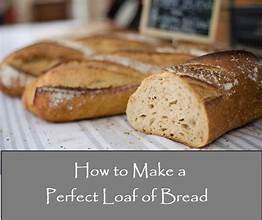
Breadmaking has always been a cherished culinary tradition, but in 2024, the art of homemade bread is undergoing a renaissance. From innovative techniques to trending flavors, bread enthusiasts are exploring new ways to elevate their loaves to perfection. Whether you’re a seasoned baker or just starting out, mastering the craft of homemade bread can be both rewarding and therapeutic. This guide will walk you through the top trends and techniques that will help you create the perfect loaf every time.
1. Embracing Ancient Grains
One of the most significant trends in 2024 is the resurgence of ancient grains. Grains like spelt, einkorn, and emmer are gaining popularity not only for their rich, nutty flavors but also for their nutritional benefits. Unlike modern wheat, which has been heavily hybridized, ancient grains are often easier to digest and contain more vitamins and minerals.
How to Incorporate Ancient Grains:
- Start with a Blend: If you’re new to ancient grains, start by blending them with all-purpose flour. This will give you the benefits of ancient grains without drastically altering the texture of your bread.
- Experiment with Hydration: Ancient grains often require different hydration levels than modern wheat. Be prepared to adjust the water content in your dough to achieve the right consistency.
- Flavor Pairings: Ancient grains pair well with ingredients like honey, nuts, and seeds. Experiment with these additions to enhance the flavor profile of your bread.
2. Sourdough: The Ultimate Artisan Bread
Sourdough has been a beloved bread choice for centuries, and its popularity continues to soar in 2024. The natural fermentation process not only gives sourdough its distinctive tang but also makes it easier to digest. Sourdough bread is also highly customizable, allowing bakers to experiment with different flours and hydration levels.
Key Techniques for Perfect Sourdough:
- Maintaining Your Starter: A healthy starter is the foundation of great sourdough. Feed your starter regularly and store it in a warm, stable environment to keep it active.
- Autolyse for Texture: The autolyse method, where you mix flour and water and let it rest before adding salt and starter, can improve the texture and elasticity of your dough.
- Cold Fermentation: For a more complex flavor, try cold fermenting your dough in the refrigerator for 12-24 hours. This slow fermentation process enhances the flavor and makes the bread easier to digest.
3. Gluten-Free Bread: No Compromises on Flavor
As the demand for gluten-free options continues to rise, bakers are finding new ways to create delicious, gluten-free bread without sacrificing flavor or texture. In 2024, the focus is on using a variety of gluten-free flours, such as almond, coconut, and buckwheat, to achieve the perfect loaf.
Tips for Gluten-Free Baking:
- Use a Blend of Flours: A mix of gluten-free flours will give your bread a better texture and flavor. Experiment with different ratios to find the combination that works best for you.
- Binders Are Key: Gluten-free bread requires binders like xanthan gum, psyllium husk, or chia seeds to hold the dough together. These ingredients mimic the elasticity of gluten and help your bread rise.
- Don’t Skip the Resting Period: Gluten-free dough benefits from a longer resting period to allow the flours to hydrate fully. This step is crucial for achieving a moist, tender crumb.
4. Innovative Baking Techniques
2024 is all about innovation in the kitchen, and breadmaking is no exception. From new baking methods to cutting-edge equipment, these innovations are helping home bakers achieve professional-level results.
Top Techniques to Try:
- Dutch Oven Baking: Baking bread in a Dutch oven creates a steam environment that mimics a professional bread oven, resulting in a crisp, crackly crust and tender interior.
- Scoring for Aesthetics and Function: Scoring the dough before baking not only creates beautiful patterns on the surface but also allows the bread to expand properly in the oven. Experiment with different scoring techniques to add a personal touch to your loaves.
- Sous Vide Bread: Although traditionally used for cooking meats, the sous vide method is being adapted for breadmaking. By vacuum-sealing the dough and cooking it in a water bath, bakers can achieve precise temperature control, leading to consistent results.
5. Flavor Infusions: Beyond Traditional Bread
In 2024, bakers are pushing the boundaries of traditional bread flavors by incorporating unique ingredients and flavor infusions. From herbs and spices to fruits and vegetables, the possibilities are endless.
Creative Flavor Ideas:
- Herb-Infused Dough: Incorporate fresh herbs like rosemary, thyme, or basil directly into your dough for a fragrant and flavorful loaf.
- Sweet and Savory Combinations: Try adding ingredients like caramelized onions, sun-dried tomatoes, or even chocolate chunks to your dough. These additions can create surprising and delightful flavor combinations.
- Seasonal Ingredients: Take advantage of seasonal produce by adding fresh fruits or vegetables to your bread. Pumpkin, zucchini, and apples are all great options that can add moisture and flavor to your loaf.
6. Sustainable Baking Practices
As the world becomes more conscious of sustainability, bakers in 2024 are adopting eco-friendly practices in their kitchens. From sourcing local ingredients to minimizing waste, sustainable baking is not only better for the environment but can also enhance the quality of your bread.
Sustainable Baking Tips:
- Use Local and Organic Ingredients: Sourcing ingredients locally reduces your carbon footprint and supports local farmers. Organic flour and grains are also free from harmful pesticides, resulting in a healthier loaf.
- Reduce Food Waste: Repurpose leftover bread into croutons, breadcrumbs, or bread pudding to minimize waste. You can also use stale bread to make a flavorful starter for your next loaf.
- Energy-Efficient Baking: Invest in energy-efficient appliances or consider baking multiple loaves at once to reduce energy consumption. Additionally, try to bake during off-peak hours to conserve energy.
7. The Rise of Community Baking
Baking has always been a communal activity, but in 2024, community baking is taking on new forms. From online bread-baking groups to local workshops, people are coming together to share their love of breadmaking and learn from one another.
Ways to Get Involved:
- Join Online Communities: Social media platforms and forums are great places to connect with other bakers, share recipes, and troubleshoot common baking issues.
- Attend Workshops and Classes: Many communities offer bread-baking workshops or classes where you can learn new techniques and meet fellow bread enthusiasts.
- Host a Bread Swap: Organize a bread swap event where participants can exchange homemade loaves. It’s a fun way to try new recipes and connect with your local community.
Conclusion
Mastering homemade bread in 2024 is about more than just following a recipe; it’s about embracing new trends, experimenting with flavors, and connecting with others who share your passion. By incorporating ancient grains, perfecting your sourdough, exploring gluten-free options, and adopting innovative techniques, you can create the perfect loaf that not only tastes great but also reflects your personal style. Whether you’re baking for your family, sharing with friends, or simply enjoying the therapeutic process, the art of breadmaking is a journey that continues to evolve and inspire.

